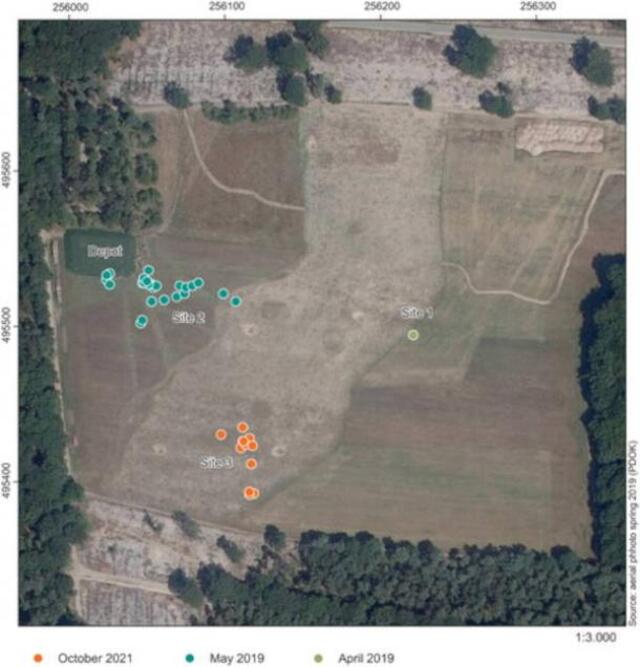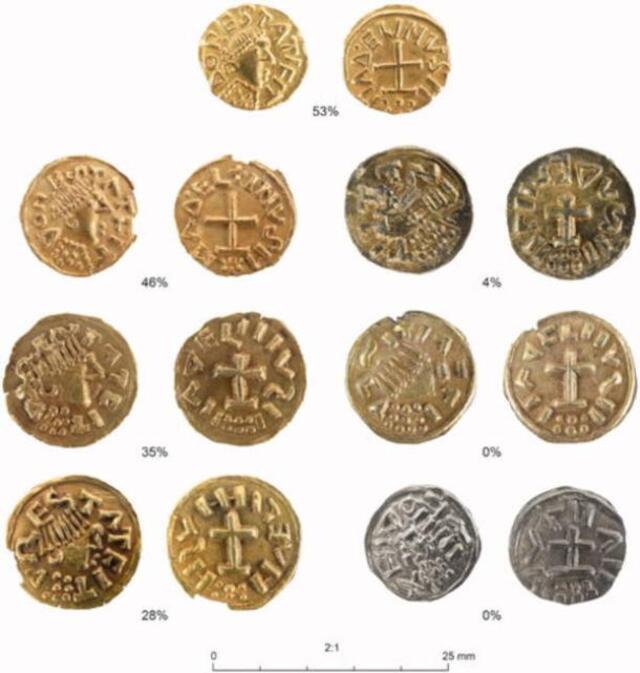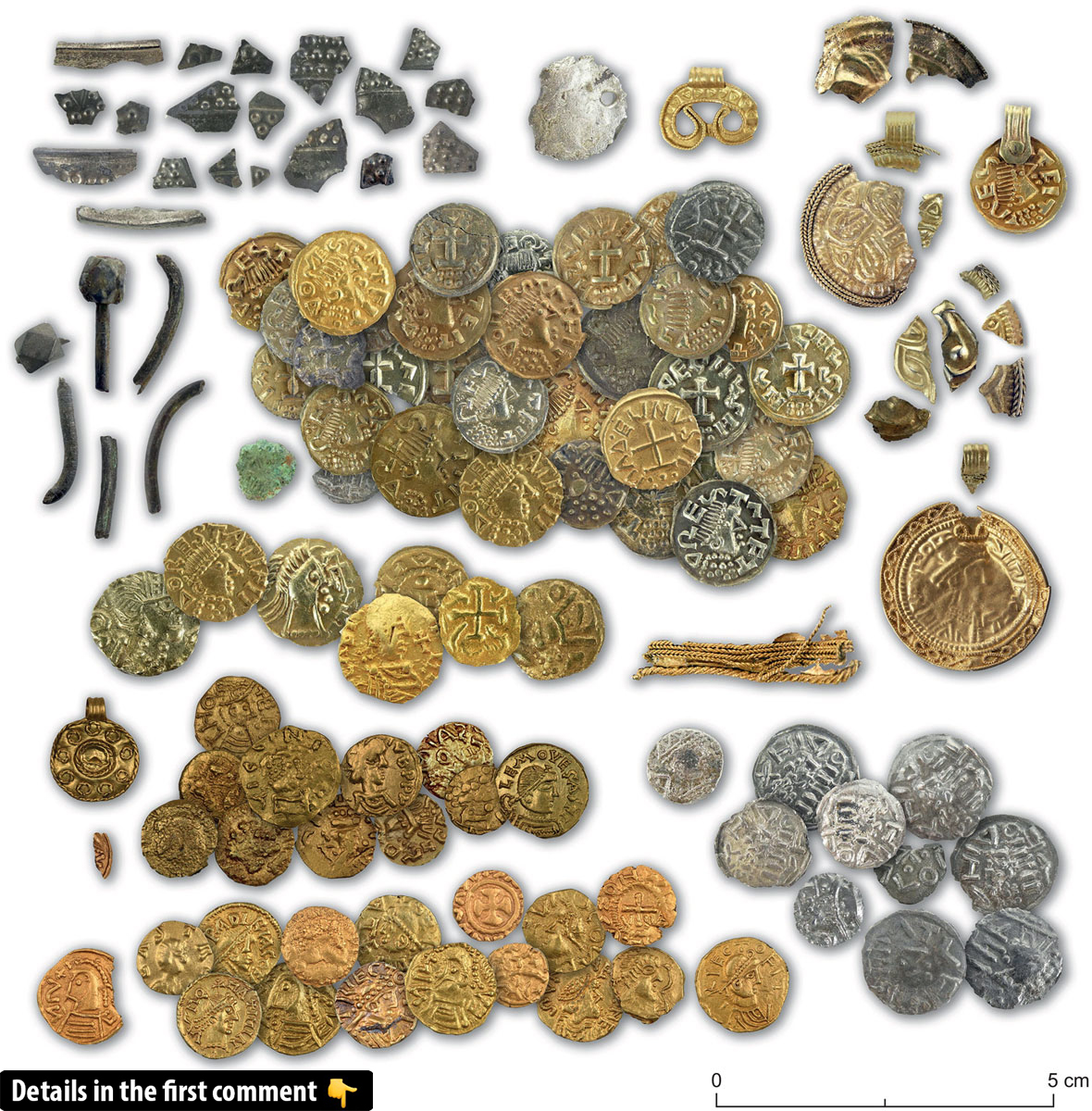In the heart of the Netherlands, a groundbreaking discovery has shed new light on the ancient rituals of a 7th-century cult site. Hidden beneath the earth for centuries, gold and silver offerings were unearthed, revealing a fascinating glimpse into a pre-Christian past. The Hezingen cult site, with its complex arrangements and sacred offerings, offers rare insights into the region’s religious practices before the widespread rise of Christianity. This archaeological find provides not just treasure, but a window into the transformative period of Europe’s cultural history.
The Discovery of the Hezingen Cult Site
In 2020 and 2021, metal detectorists stumbled upon multiple gold and silver coins near the hamlet of Hezingen, prompting archaeological excavation efforts. What was initially thought to be a small find turned into a major discovery—an open-air cult site dating back to the 7th century AD. Archaeologists uncovered several distinct areas, with valuable offerings deposited at regular intervals over a period of about 100 years. The site featured a large circular structure made of wooden posts and an unusually shaped building, possibly linked to local religious practices. Situated near an ancient road junction and elevated on a prominent hill, the site seemed strategically chosen for its ritual significance.

Video
Check out this video to uncover the fascinating discovery of gold and silver ritual offerings at a 7th-century cult site, shedding light on ancient religious practices.
The Significance of the Offering Deposits
Among the most fascinating discoveries at Hezingen were the hoards of gold and silver coins, along with a variety of jewelry items. The wealth of these offerings, including a gold pendant, a silver earring, and nearly two dozen gold coins, suggests that the site was regularly visited by wealthy individuals, possibly local elites.

Archaeologists believe these deposits were part of a broader system of ritual offerings, likely linked to fertility rites, with the timing and nature of the offerings tied to seasonal ceremonies. The finds, such as the jewelry and coins, were often deposited during specific intervals, possibly reflecting the worship of deities associated with agricultural cycles.
The Role of the Posts and Seasonal Rituals
One of the most striking features of the Hezingen site is the alignment of its posts with the rising and setting of the sun during the spring and autumn equinoxes. This suggests the site was used for seasonal rituals, aimed at ensuring bountiful harvests or appeasing the gods. The use of wooden posts in pagan rituals is not uncommon, but the precise alignment at Hezingen indicates the site’s significance during these seasonal transitions.
During the equinoxes, the sun’s position and the changing of the seasons may have been seen as powerful symbols of life, death, and rebirth, with the rituals at Hezingen designed to influence these cosmic forces.

A Glimpse into the Rituals of Paganism in the 7th Century
The offerings at Hezingen provide a unique window into the pagan religious practices of 7th-century Europe. The hoards of gold coins and precious metals suggest that these rituals were not only practiced by common folk but also by the local elites, who would have had the means to afford such valuable items. The abundance of these offerings also speaks to the importance of the rituals themselves, likely seen as vital for ensuring the prosperity of both the individual and the community. While the specific deities worshipped at Hezingen remain unknown, the alignment with the equinoxes and the ritual deposits suggest that the people of Hezingen were deeply connected to nature, using their offerings as a way to engage with the forces governing the world around them.
Christianization and the Decline of Pagan Sites

The timing of the Hezingen site’s abandonment in the late 7th or early 8th century is particularly significant. This marks a period of transition in the region, as Christianity began to spread northward and eastward from the Frankish Empire, eventually replacing many of the older pagan beliefs.
The presence of “devil’s money” offerings—gold and silver deposits that were often associated with pagan rituals—suggests that the local population was resistant to the monotheistic religion that was beginning to take hold. Over time, however, as Christian missionaries arrived, many local communities began to renounce their old gods in favor of Christianity. The abandonment of the Hezingen site may have been a sign of the community’s shift in religious identity, with the local elite likely being among the first to adopt Christianity.
The Influence of Christianity on Pagan Rituals
Christianity’s arrival in Europe did not come without conflict, particularly in regions like Hezingen, where paganism had deep roots. Early Christian missionaries, such as Plechelmus and Lebuinus, were instrumental in spreading the new faith, but their efforts were often met with resistance from those who continued to practice the old ways. The renunciation of pagan deities and the cessation of offerings at cult sites like Hezingen were part of a larger movement toward Christianization. The gradual decline of pagan rituals, coupled with the rise of Christian worship, reflects the power of the new religion to reshape societal norms and cultural identities.
The Findings and Their Impact on Medieval Archaeology
The discovery of the Hezingen cult site represents a significant contribution to the study of medieval archaeology, particularly in understanding the religious practices of pre-Christian societies in northern Europe. While the Nordic world is rich with well-documented pagan sites, the same cannot be said for regions like the Netherlands, northern Germany, and Britain, where fewer pre-Christian cult sites have been discovered.
The Hezingen site, with its wealth of offerings and its alignment with seasonal rituals, provides archaeologists with a rare glimpse into the religious practices of a society on the cusp of religious transformation. These findings help to fill in the gaps in our understanding of how local cultures navigated the pressures of religious change and the eventual embrace of Christianity.
Video
Watch this video to explore the archaeological discovery of ancient Egyptian writings that may confirm the 10 plagues of Exodus, offering new insights into biblical history.
Conclusion
The discovery of the Hezingen cult site is a rare and invaluable contribution to our understanding of medieval religious practices. The gold and silver offerings, along with the evidence of seasonal rituals, provide a vivid picture of pagan worship during a time of cultural transition. As Christianity began to take hold in the region, pagan sites like Hezingen were abandoned or converted, marking the end of an era.
The Hezingen site not only sheds light on the rituals of pre-Christian societies but also offers new insights into the ways in which communities navigated the challenges posed by the spread of Christianity. As archaeological research continues, we can only imagine what other hidden stories from the past will be uncovered, offering us even more understanding of the complex and fascinating history of medieval Europe.



